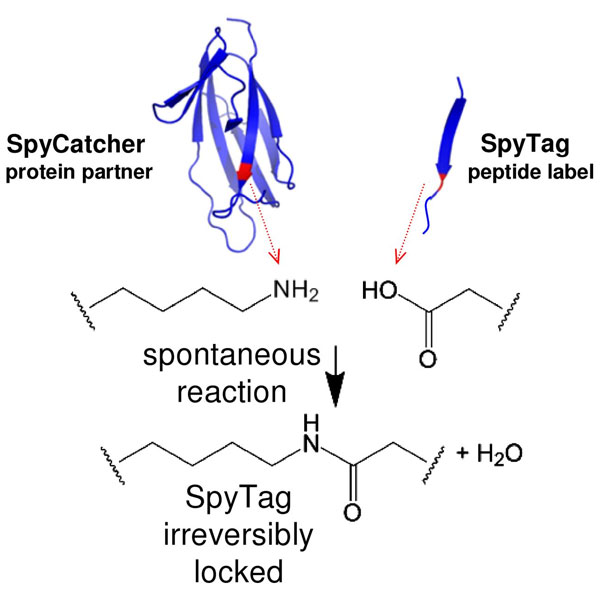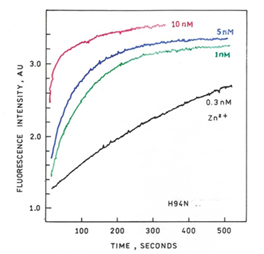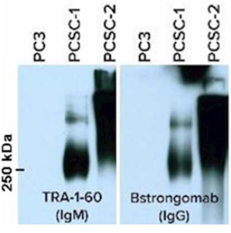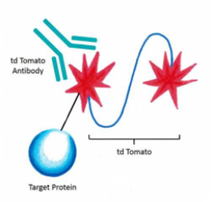10 Unique Reagents that Accelerated Research in 2021
Our mission is to facilitate access to unique reagents developed by academic laboratories worldwide on behalf of the scientific community. Together with our providing investigators, we work to distribute reagents that might otherwise sit unused in laboratory freezers to researchers committed to furthering scientific progress.
As we enter 2022, we take a look back at the previous year and highlight some of the reagents that contributed to accelerating research. Many of these reagents were cited in literature in 2021, used to fight the COVID-19 pandemic or are opening new avenues for research in their unique fields. Read below about 10 of the many reagents used in 2021 to further scientific discovery:
1. SpyTag/SpyCatcher Protein Coupling Reagents

From the laboratory of Mark Howarth, PhD, University of Oxford
The SpyTag/SpyCatcher system is a convenient protein coupling tool for irreversible peptide-protein ligation. It is ideal for binding, labeling, immobilization and creating new kinds of protein architectures. These reagents have been cited in more than 35 publications, including Molecular Imaging and Biology and PNAS. View all of the SpyTag/SpyCatcher coupling reagents in our catalog here.
From the laboratory of Stephen H. Leppla, PhD, National Institute of Allergy and Infectious Diseases/NIH
Anthrax is a highly contagious bacterial infection and a persistent global threat, both as a zoonotic disease and potential weapon in the hands of bioterrorists. This makes the establishment of effective therapies against anthrax an important task for the biomedical industry. We offer a selection of anthrax protein variants that were used this year to validate new engineered recombinant anthrax antibodies from our sister company, Absolute Antibody. This collection of recombinant antibodies includes four anti-PA clones and two anti-LF clones available in engineered formats such as human IgG1, mouse IgG2a and IgM.
From the laboratory of Michael A. Whitt, PhD, University of Tennessee
The Delta-G-VSV Pseudotyping System is useful for identifying cellular receptors for viruses, screening for entry inhibitors, and evaluating neutralizing antibody responses following vaccination. In particular, it enables studies of SARS-CoV-2 viral entry and COVID-19 vaccine effectiveness at just biosafety level 2 (BSL-2) containment. As noted by UTHSC and The Daily Memphian, Kerafast has been instrumental in helping to distribute this system for COVID research throughout the pandemic. In 2021, our blog post highlighted an Israeli study citing this system that explored creating a single-dose recombinant vaccine against SARS-CoV-2.
4. Zinc Biosensor Proteins and Buffer Kits

From the laboratory of Richard Thompson, PhD, Pokegama Technologies
With the discovery of zinc transcription factors and zinc transporters with clinical applications, new tools and reagents have been developed to facilitate research into zinc biology. In particular, researchers have needed sensitive, selective and fast-acting tools to measure and image zinc ions. Dr. Richard Thompson has been working for years to address these challenges and founded the company Pokegama Technologies to improve access to his unique set of zinc reagents. Read our recent interview with Dr. Thompson on our blog and check out his reagents in our catalog, including three fluorescent zinc biosensor proteins and two MetalloBuffer™ buffer kits.
5. Murine Squamous Cell Carcinoma Cell Line (NOOC1)
From the laboratory of Yu Leo Lei, DDS, PhD, University of Michigan
Added to the Kerafast catalog in 2021, this NOOC1 murine squamous cell carcinoma cell line is a hypoimmunogenic cold cancer model with high-fidelity resemblance to human tobacco carcinogen-associated squamous cells. It is useful for studying immunotherapy in cancer, specifically cold tumors, and is resistant to anti-PD-L1 and anti-CTLA4. The provider, Dr. Yu Leo Li, recently cited the cell line in his own OncoImmunology study about cancer-specific signaling and effector CD8+ T-cell exhaustion.
6. DNA-RNA Hybrid [S9.6] Antibody
From the laboratory of Stephen H. Leppla, PhD, National Institute of Allergy and Infectious Diseases/NIH
Our DNA-RNA hybrid antibody continues to be used by researchers around the world, due to its high specificity and affinity for DNA-RNA hybrids and ability to detect R loops. The antibody has been included in various publications including Journal of Cell Science, Cancers, Nature Communications, Nucleic Acids Research, Cell Reports and more, all viewable here. Check out the running list of publications by research application to view its utilization in experimental design.
7. TRA-1-60 [Bstrongomab-9A] Antibody

From the laboratory at CureMeta
This is the only commercially available IgG format of the TRA-1-60 antibody, opening up new experimental possibilities compared to the traditional IgM format. Studies have shown that TRA-1-60 is highly expressed on normal embryonic stem cells and re-expressed in many kinds of human cancers. In 2021, we partnered with CureMeta, who used to be our neighbor in our Boston office, to offer this antibody to researchers worldwide. If you would like to test this antibody out, contact us about receiving a free sample.
8. Dicentrarchus labrax Embryonic Cell Line (DLEC)
From the laboratory of Francesco Buonocore, PhD and Giuseppe Scapigliati, PhD, University of Tuscia
This European sea bass embryonic cell line was added to our catalog for marine biotechnology research with a focus on generating sustainable alternative animal products. It was the first cell line available through our partnership with The Good Food Institute, which aims to make terrestrial meat and aquatic cell lines more widely available to support the development of sustainable meat and seafood. We continue to see press about the great work that The Good Food Institute is doing, which we continue to highlight on our blog. Stay tuned for more reagents from The Good Food Institute in the coming years.
From the laboratories of James W. Hodge, PhD, MBA and Jeffrey Schlom, PhD, National Cancer Institute/NIH
The MC-38 cell line, derived from murine colon adenocarcinoma cells, was used for a variety of applications in 2021 for studying cancer. You can view all of the papers on our website, including studies in Cell Reports, Journal for Immunotherapy of Cancer, Nature Communications and Frontiers in Oncology. Our blog highlighted a study that used the MC-38 cell line to look at how cancer manipulates the tumor microenvironment to dodge immune system attacks. In our catalog, you can also find versions of the MC-38 cell line which have been engineered to express MUC-1 or carcinoembryonic antigen (CEA).
10. Anti-tdTomato [16D7] Antibody

From a laboratory at The Scripps Research Institute
The tdTomato protein continues to be an important tool in biotechnology and cell biology, specifically for nontoxic live cell imaging and reporter assays. The antibody recognizes a red fluorescent protein used as a spectrally distinct companion or a substitute for the green fluorescent protein (GFP) from Aequorea jellyfish. The antibody has been cited in various publications, including Development, Cell, and Scientific Reports.


